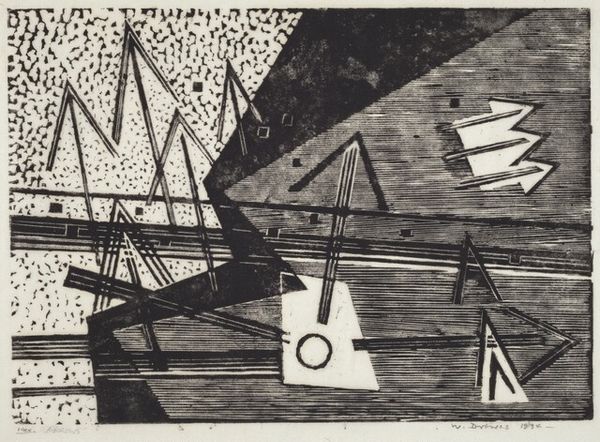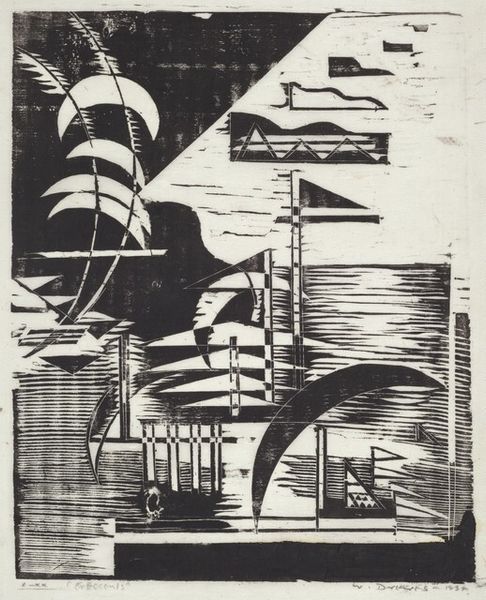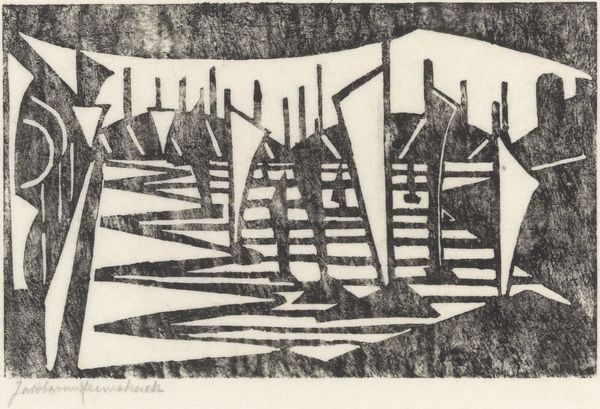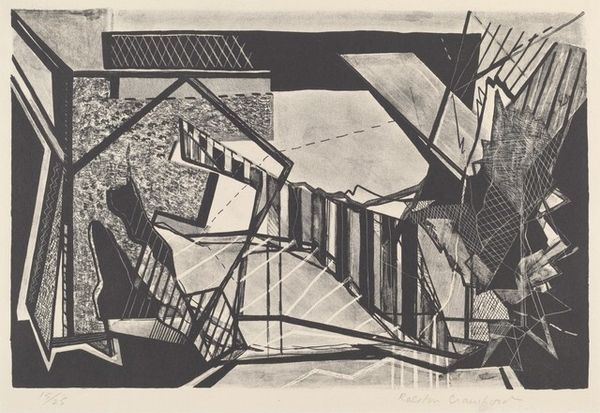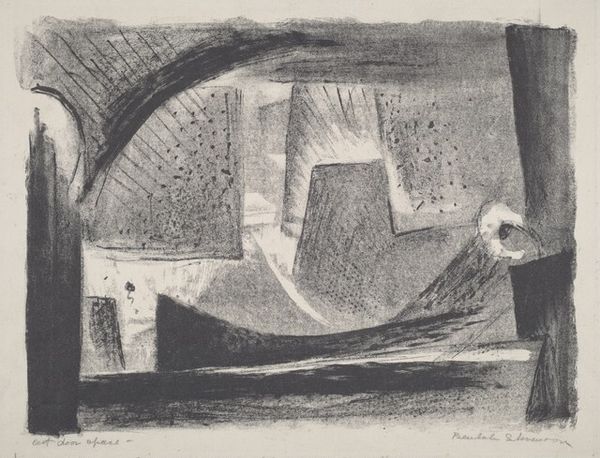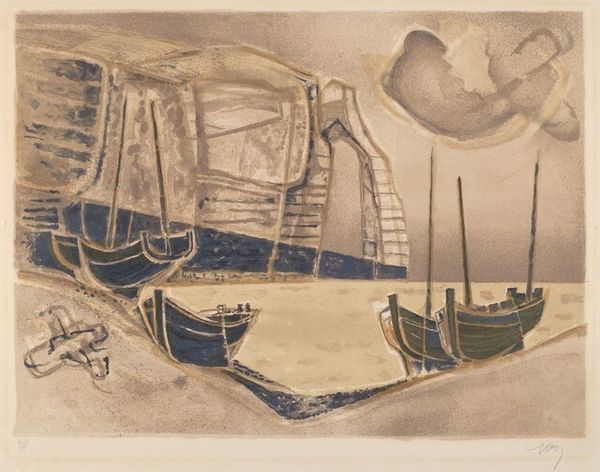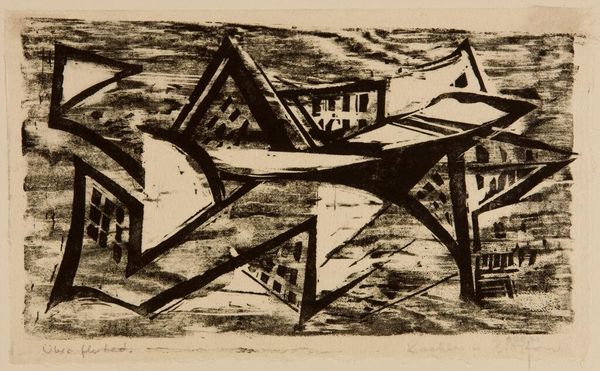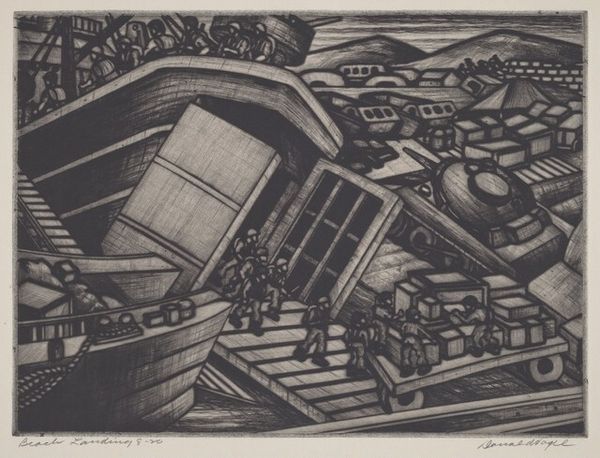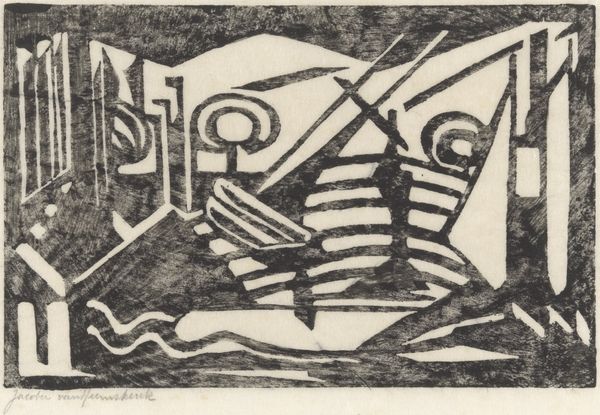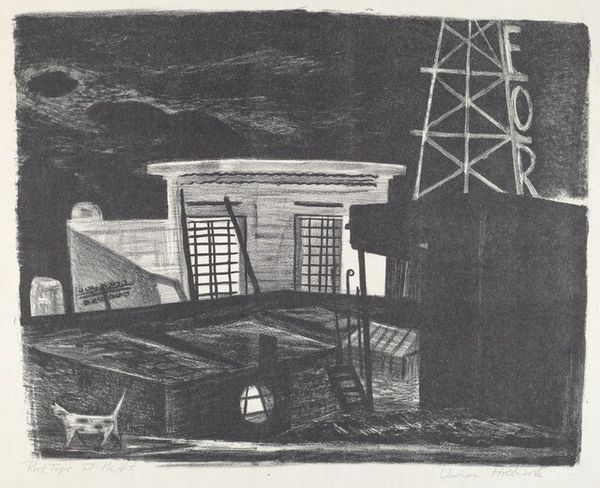
drawing, print, ink
#
drawing
# print
#
ink
#
geometric
#
cityscape
Dimensions: Image: 243 x 378 mm Sheet: 290 x 403 mm
Copyright: National Gallery of Art: CC0 1.0
Curator: Eugene Morley's circa 1939 ink drawing and print, titled "Coal Docks," immediately strikes me with its stark contrasts. It feels… heavy, somehow. Editor: Yes, heavy in the literal and figurative sense. There's a palpable sense of industrial labor embedded in the subject and the rendering of forms. The simplified, almost geometric structures of the docks are contrasted with the dark, chaotic undergrowth and the chains near the boats, grounding the print in a specific time and place marked by labor and industry. Curator: I agree, the angular forms create a distinct industrial impression. The stark lines almost give the structures the visual language of archaic symbols. There is a strong sense of man's imposition on the natural world, but then look at the almost calligraphic lines of the swirling sun... Editor: The sun does soften the image's sharp lines somewhat, doesn’t it? This era also marked a period of increased labor organizing. This work feels evocative of an American Modernist investigation into the evolving working class and industry. Morley has removed human figures almost entirely—reducing laborers to structures—as though they have been totally subsumed by this new industrial complex. Curator: The buildings certainly feel symbolic of containment or processing. The black smoke in the sky, juxtaposed against the "empty" round sun creates an interesting tension: destruction versus... nothing. It has a post-apocalyptic feel, despite the fact it pre-dates the age of environmental awareness. Editor: Precisely. And considering the time, it also prompts us to consider the relationship between labor, capital, and environmental impact within the larger sociopolitical contexts that preceded the Second World War. This scene serves as a reminder of how the relentless pursuit of industrial progress can, at times, obscure its own profound consequences. Curator: It’s intriguing how an image devoid of people can speak volumes about human toil. Editor: Absolutely, a powerful example of art capturing historical anxieties that still resonate today.
Comments
No comments
Be the first to comment and join the conversation on the ultimate creative platform.

